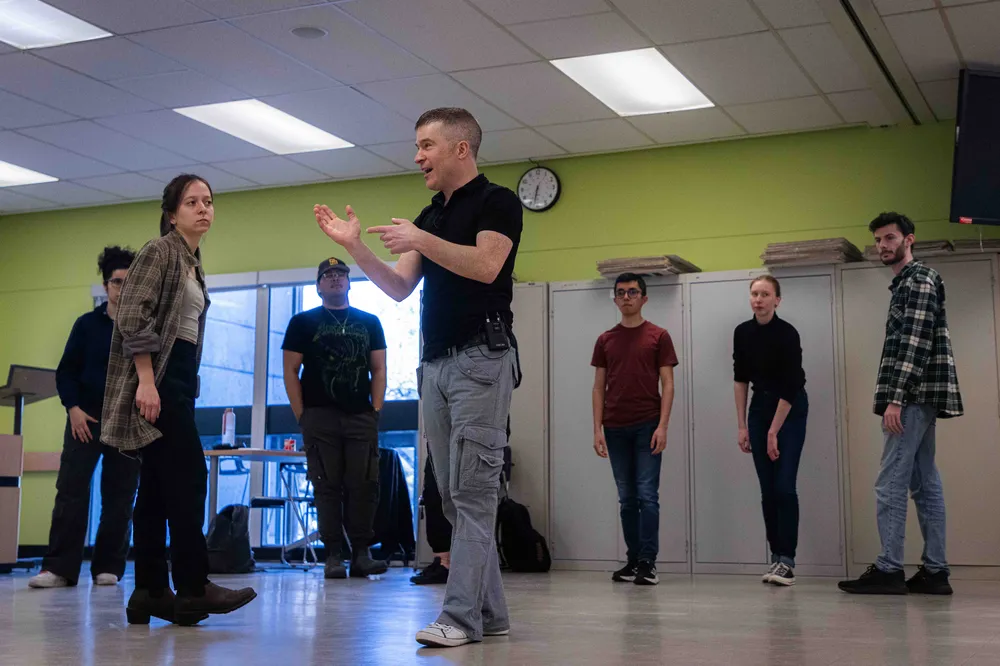While Sebastian Molnar was still living in Toronto, he and his buddies took a weekend road trip to Montréal for the city’s annual jazz festival where, at one of the stages, a melodic fusion of jazz and Latin music emanated from the performing band.
“I never heard this music before,” Molnar said in a March interview with The Ubyssey. “It was just amazing.”
Molnar described the sound as flamenco music meets the rumba of Gipsy Kings infused with Spanish guitar — that’s when Molnar’s attention turned to the audience.
“All these people were dancing and moving,” said Molnar. “I was like, ‘I want to know how they do that.’”
It took a couple years to act on that inspiration, and in his final year of undergrad at York University, Molnar started taking dance classes at the student recreation centre on campus with a friend.
Soon after, Molnar made the move to Vancouver for his master’s of science at UBC. At the time, teacher assistants were striking on campus and an acquaintance approached Molnar in the protest’s picket lines — her dance team needed guys.
Molnar spent a few months picking up choreography and the team began to dance together, performing locally and attending workshops down in California.
“Taking the workshop for me was more interesting than performing to be honest,” Molnar laughed. “Because there’s so many things, and there’s so many instructors and so many fancy moves that I’ve never seen before, different ways of dancing.”
When the team disbanded a few years later, the keys to their studio fell to Molnar, so he began preparing the space to hold his own classes in a nearly non-existent local Latin dance community.
One person showed up to his first lesson. But after a summer of advertising the “old-school” way through word of mouth and stapling fliers to telephone poles around the city, an amateur group started to draw and the team began performing locally.
“It wasn’t a huge class, but it was a good start,” said Molnar.
During more recent summers, pockets of downtown beat with an infectious drone of laughter, talk and percussive rhythms booming from a loudspeaker as people flock to the city’s squares to groove together. In a city notoriously known for being lonely, salsa clubs, bachata nights and tango milongas have become a hub of community connection through movement that requires collaboration.
As Vancouver’s fluid cultural landscape evolves, so has its contribution to Latin art. The city’s new generation of musicians and artists are drawing from tradition and the contemporary fabrics of the arts and culture scene.
For Molnar, this growing community has meant more opportunities to dance. But the stage fright never fully goes away.
“Every single time I’m gonna perform, the whole week leading up to it, no matter how many times I’ve practiced — if it’s a new routine or old routine — I always start thinking about that performance coming up,” said Molnar.
But the growing desire to participate in Latin dance has also meant more opportunities to teach. Molnar is now the UBC Latin Dance Club’s salsa bachata instructor. His background in science seeps into his approach to teaching, where his focus on coordinating movement is “analytical and technical.”
“Timing is really critical, timing is literally everything. So [in] dancing, your whole existence is based on [the] rhythm of the music,” said Molnar. “There’s technique in the timing — when do you lead? When do you follow?”
Salsa bachata is not a homogenous genre. It moulds around people and places, from LA-style Salsa on One to New York-style Salsa on Two. Throughout his career, Molnar has taught and danced his way around the world in collectives in the US and Japan, exposing him to a wide variety of salsa styles, each with their own “distinct flavour.”
“The music is also different from those different places … So that also dictates how you should dance, because you want to dance to the music. You don’t want to just dance randomly,” said Molnar. “You want to listen to that music and then try to go with what you’re feeling. Even if you don’t understand the language … there’s a certain feeling in the music.”
A student of Molnar’s will go from actively counting the beat of a song, as Molnar said, often with tension, to eventually swaying naturally with all elements of the music once they’re added. And as doing any form of art together would have it, Molnar said he’s learning too — his selfish reason for joining the team.
“If you teach, then you’re also learning too and training,” Molnar said. “That’s why I teach, it’s because I’m also in front of people, but I’m training myself by explaining things to other people, getting them to understand … then you improve, over many years, how you’re presenting the material, so I’m learning that way as well.”
“But it’s also my excuse to get out of the house because if I’m not teaching, I’m probably not going to go out on my own as much,” he joked.
Because as Molnar said, the best part of Latin dance is the fact that it’s a celebration every time.
“You’re always going to a party. You dance with new people and then it’s a new experience too, even if you’re doing the same moves and the same steps,” Molar said. “Every person you connect to, it could be a totally different experience.”
And that’s why Molnar’s advice for new dancers is to not sweat the learning curve, practice the basics and follow your partner and the music’s flow.
“Just keep at it, go to the party, enjoy the party.”
— With files from Stella Griffin
Share this article
This post was originally published on here








